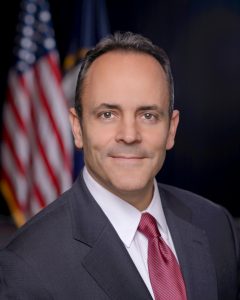 In conjunction with National Preparedness Month, Gov. Matt Bevin has proclaimed September as Preparedness Month in Kentucky.
In conjunction with National Preparedness Month, Gov. Matt Bevin has proclaimed September as Preparedness Month in Kentucky.
Kentucky Emergency Management urges Kentuckians to “BE AWARE – BE PREPARED – HAVE A PLAN – MAKE A KIT.”
Kentuckians face threats to their safety and property throughout the year; from tornadoes, flooding, straight line winds, lightning, winter storms, man-made hazards, to daily emergencies. Every household and every business should be prepared to face these challenges at any given time. Disasters can occur at anytime, anywhere in Kentucky.
As we have all seen recently with Hurricanes Harvey, Irma, Jose and now impending Maria, preparedness can make the difference of saving your life or your family. Supplies such as water, non-perishable food, flashlights and batteries, radios and first aid kits are easy to store, and can be lifesavers when a crisis hits. A communication plan with family, friends and neighbors is also very important.
Michael Dossett, director of Kentucky Emergency Management (KYEM) stated, “During National Preparedness Month, the theme, ‘Disasters don’t plan ahead – You Can!’ is a great opportunity to remind our family, friends and neighbors of the importance of planning ahead, highlighted by the recent losses of Hurricanes Harvey and Irma.” Dossett went on, “ask yourself, what would you do in the next two hours, next two days and next two weeks following a disaster event to ensure the survival of your loved-ones?”
PLANNING FOR DISASTER: “BE AWARE – BE PREPARED – HAVE A PLAN”
Be Aware:
- Stay informed about risks in your communities and monitor weather forecasts.
- Own and monitor a battery backed-up or crank-type NOAA Weather Alert Radio. During threatening weather, stay tuned to your local broadcast stations.
- Discuss conditions with family members, and know their locations during dangerous weather.
Be Prepared:
- Discuss known risks with family members and neighbors.
- Develop and review your emergency plan periodically and update of necessary.
- Assemble an emergency kit(s) and refresh periodically. A kit should have enough food, water and medications for each family member for five days.
- Drill: practice your plan with household members.
Have a plan:
- Share your plan with others, including friends or relatives in another region or even another state
- Medications – prepare a list of all prescription drugs.
- Utilities – Written instructions for how to turn off electricity, gas and water; if authorities advise you to do so. (Remember, you’ll need a professional to turn them back on.)
- Shelter – Identify safe locations within and outside your residence.
- Contacts – Written contact information for relatives, neighbors, utility companies, employers/employees and local emergency contact telephone numbers.
- Evacuate – Predetermine evacuation routes. Identify where you could go if told to evacuate. Choose several places, such as a friend or relative’s home in another town, a motel or shelter.
- Children – Make backup plans for children in case you (or they) can’t get home in an emergency.
- Vehicles – Keep jumper cables in all vehicles at all times.
- Maintain at least a half tank of fuel in vehicles.
- Move vehicles away from under trees during possible wind events.
- Keep an emergency kit in all vehicles.
- During winter months, keep a blanket and bag of kitty litter in the trunk.
- Medications – prepare a list of all prescription drugs.
- Pets – have at least a 3 day supply of food and water for each pet. Have carriers, a collar or harness with ID tag, rabies tag and a leash; familiar items such as treats, toys and bedding can help reduce stress for your pet.
- Share your plan with others, including friends or relatives in another region or state.
Make an emergency kit:
- First aid kit and essential medications (to include prescription medicines).
- Canned food and can opener
- At least three gallons of water per person
- Protective clothing, rainwear and bedding or sleeping bags
- Battery or crank powered radio, flashlight and extra batteries or crank recharging stations that are capable of recharging cell phones, tablets, laptops, etc.
- Waterproof matches and candles
- Local phone book
- Special items for infants, elderly or disabled family members
- Extra set of car keys
- Cash – as much as you can afford!
For additional preparedness information, visit www.ready.gov and Kentucky Emergency Management at www.kyem.ky.gov. Follow @KYEMPIO on Twitter, like us on Facebook, and sign up for text alerts.
See Governor’s proclamation at https://kyem.ky.gov/Documents/septemberpreparednessmonth.pdf.
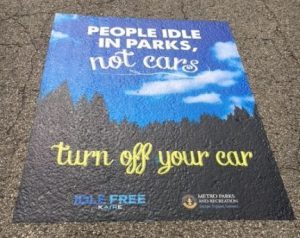 A partnership between Kentuckiana Air Education (KAIRE) and Louisville Parks and Recreation has led to the creation of colorful advertisements stressing an anti-idling message that can be seen approximately a dozen parks throughout Louisville.
A partnership between Kentuckiana Air Education (KAIRE) and Louisville Parks and Recreation has led to the creation of colorful advertisements stressing an anti-idling message that can be seen approximately a dozen parks throughout Louisville.
The message, “People Idle In Parks – Not Cars,” can be seen on pavement decals affixed to surfaces in high-traffic areas at some of Louisville busiest parks, including Joe Creason, Seneca, Thurman Hutchins and Sun Valley.
The advertisements have been placed in 16 parks with 14 more to follow in upcoming weeks.
“The advertisements are a reminder that parks are spaces where we promote the enjoyment of clean air and a healthy environment,” said Seve Ghose, Director of Parks and Recreation. “We’re encouraging our visitors to turn the engine off if they can, and possibly step outside of their car and go for a walk, and enjoy the surroundings.”
Unnecessary engine idling can create an air pollution “hot spot” in places like parking lots, school pick-up lines, and drive-thru windows. As Louisville’s overall air quality improves and vehicles become cleaner, idling is still a blind spot for many motorists.
“Modern cars don’t belch out black, smoky fumes anymore, but they still pollute the air,” said Air Pollution Control District Director Keith Talley Sr. “This is an easy way to reduce your personal pollution footprint.”
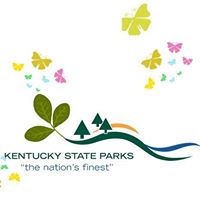
Credit: KY State Parks
The Garden Club of Kentucky will dedicate two more Monarch butterfly waystations at the William Whitley House State Historic Site and Carter Caves State Resort Park in September.
The William Whitley House ceremony is Sept. 22 at 5 p.m. and the Carter Caves event is Sept. 27 at 2 p.m.
Members of the Garden Club of Kentucky have worked with state parks and other groups to design and install Monarch waystations.
Monarch butterflies need specific resources for their migration to and from Mexico. Those include nectar producing flowers, shelter and milkweed, the only plant that Monarch caterpillars will eat. These Kentucky waystations serve millions of migrating Monarch butterflies.
Other Kentucky State Parks with Monarch waystations include: Kentucky Dam Village, Waveland, Blue Licks Battlefield, Perryville Battlefield, Old Fort Harrod, Fort Boonesborough, Cumberland Falls, Lake Barkley, Jenny Wiley, Pennyrile Forest, General Butler and Barren River Lake.
For more information about the Monarch waystation program or butterfly gardening, visit www.monarchwatch.org
For more information about Kentucky State Parks, visit www.parks.ky.gov
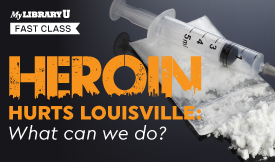
Photo: Louisville Free Public Library
The Metro Department of Public Health and Wellness and the Louisville Free Public Library will offer the class, Heroin Hurts Louisville on Tuesday, Sept., 26 at 7:00 p.m. at the South Central Regional Library at 7300 Jefferson Blvd. and again on Tuesday, Oct., 24 at 6:00 p.m. at the St. Matthews Library at 3940 Grandview Ave. The 90-minute class is free. Registration is required. Phone 574 -1623 or contact the Library @LFPL on Twitter or @LouisvilleFreePublicLibrary on Facebook to register.
Heroin Hurts Louisville is taught by a certified drug and alcohol counselor. It includes educational information, video testimonies from young people and facilitated discussion. Participants will receive a toolkit with information and available resources. The class is intended to provide parents and other caring adults with valuable insights on why children and teens use drugs and how to start a dialogue about the dangers of substance abuse. It is also intended to empower parents with steps to take if they suspect or know someone at risk of using drugs.
“This class is a tool for parents to open up a dialogue with their children around the issues associated with drug use,” said Dr. Sarah Moyer, director of the Louisville Department of Public Health and Wellness. “Many of our initiatives to battle the opioid epidemic in Louisville have, by necessity, been reacting to the needs of people caught up in drug use and protecting our community from infectious diseases such as HIV and hepatitis C,” she said. “But it’s also important that we take proactive steps to prevent substance abuse in the first place.”
“We are happy to be teaming up with Public Health and Wellness to be bringing these classes to our community,” said James Blanton, Director of Louisville Free Public Library.
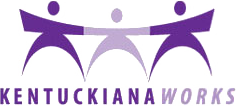 Maya Williamson was struggling, even homeless briefly, and wasn’t sure she would ever realize her dream of going to college. Then, she connected with a Louisville program that helped her get financial aid and stay on track with her studies. Now, Maya is pursuing a business degree at Jefferson Community & Technical College, planning to be the first in her family to graduate college.
Maya Williamson was struggling, even homeless briefly, and wasn’t sure she would ever realize her dream of going to college. Then, she connected with a Louisville program that helped her get financial aid and stay on track with her studies. Now, Maya is pursuing a business degree at Jefferson Community & Technical College, planning to be the first in her family to graduate college.
Maya says the support she got from the KentuckianaWorks College Access Center (KCAC) made the difference.
“I don’t think I would have made it to college without all their help,” she said.
The KCAC provides a variety of free services that help people go to college, including help in applying for financial aid, and in finding and enrolling in the school that’s right for them. This past year, the center assisted more than 3,000 people — more than two-thirds of them were lower-income, and 83 percent were the first in their family to attend college.
Mayor Greg Fischer joined the KCAC adult program’s staff, clients and partners in marking its 40th year of operation by dedicating new and improved space in the ArtSpace Building at 323 W. Broadway, next to the Brown Theater.
“Helping people realize their dream of higher education is not only critical for each student and their family, it’s critical to building a stronger workforce and economy,” the Mayor said. “It’s also key to building safer neighborhoods because greater education leads to better jobs and careers that can break the cycle of poverty, hopelessness and violence.”
A critical time for people wanting to attend college begins October 1, when the application for federal student financial aid, known as FAFSA, can be filed.
“Getting financial aid is a key component to make your dreams of college a reality,” said Lashala Goodwin, executive director of KCAC. “Our counselors can guide you through the process and maximize your chances of getting funding and other support.”
Goodwin said many schools require a completed FAFSA form to be eligible for any type of student aid, including grants, work-study, student loans and scholarships. And it’s especially important to act quickly in Kentucky, which is one of only a few states that awards financial aid on a first-come, first-serve basis. People who wait to file the FAFSA could lose out on state support for their education.
KCAC, which is funded by federal TRIO grants, operates two programs, including one that focuses on helping adults 19 and older like Williamson go to college.
A second program works directly with high school students, grades 9-12, helping them keep on track with their studies and develop a plan for college. Program counselors are based in five JCPS schools: Fairdale, Iroquois, Liberty, Valley and Western, and worked one-on-one with more than 800 students during the last school year.
Those seeking assistance through KCAC can contact the center at (502) 584-0475 or go to kentuckianaworks.org/KCAC. There is no charge for any of the services.
The program’s new space on Broadway also houses KentuckianaWorks’ Degrees Work program, which helps boost college attainment by contracting directly with employers such as Humana, Universal Woods and Louisville Metro Government to help their employees return to college.
Both the KCAC and Degrees Work are important contributors to the work being done by 55,000 Degrees, the city’s education movement.
As part of the 52 Weeks of Public Health campaign, the Kentucky Department for Public Health (DPH) within the Cabinet for Health and Family Services (CHFS), is celebrating Newborn Screening Awareness Month by promoting awareness about the importance of early screening for Kentucky babies.
“Early intervention with the new mother and baby is critical to provide care and support for the best outcome,” said CHFS Secretary Vickie Yates Brown Glisson. “The Cabinet is working hard across disciplines to develop these systems.”
The Newborn Screening Program is a population-based service, provided by DPH that provides testing for developmental, genetic and metabolic disorders in newborn babies, allowing steps to be taken before symptoms develop.
“The importance of these metabolic screenings for newborns in Kentucky cannot be overstated,” said Connie Gayle White, M.D., senior deputy commissioner at DPH. “For many children, early screening can literally mean the difference between a full, healthy life and one spent battling a debilitating condition. It can even mean the difference between life and death in some cases.”
Newborn screening detects conditions not visible at birth and ensures life-saving treatment can begin as soon as possible. Most of these illnesses are very rare, but can be treated if caught early. The types of newborn screening tests done vary from state to state, but all 50 states have reported screening for at least 26 disorders on an expanded and standardized uniform panel.
In Kentucky, newborn screening is required by law. A blood specimen is obtained by heel stick from the newborn at the birthing facility between 24-48 hours after birth. The specimen is sent to the Kentucky Division of Laboratory Services for processing and abnormal findings are reported to the Newborn Screening Program.
Kentucky’s Newborn Screening Program uses a metabolic panel screening for 53 disorders which includes: congenital, hypothyroidism, cystic fibrosis, abnormalities in  hemoglobin i.e. sickle cell, and disorders in the metabolism of carbohydrates, amino acid, organic acids, fatty acids, and lysosomes. When a diagnosis is confirmed, treatment is initiated through the administration of drugs, hormones or dietary adjustments.
hemoglobin i.e. sickle cell, and disorders in the metabolism of carbohydrates, amino acid, organic acids, fatty acids, and lysosomes. When a diagnosis is confirmed, treatment is initiated through the administration of drugs, hormones or dietary adjustments.
Even if a baby is not born in a hospital, it is critical that they be tested within the first 24-48 hours after birth. Over 50,000 newborn screenings are conducted annually in the state of Kentucky. In 2016, 141 newborns tested were positively diagnosed as a result of the initial newborn screening. In addition to blood tests, screening for hearing loss and critical congenital heart disease (CCHD) are highly recommended for all Kentucky babies.
To learn more about the benefits of the Kentucky Newborn Screening Program, please visit the Kentucky Department for Public Health or the Centers for Disease Control & Prevention website.

Credit: KY State Parks
Students from nine more Kentucky schools are taking field trips to a Kentucky State Park this fall thanks to a transportation grant from the Kentucky State Parks Foundation.
The KSPF’s “Inside Out Education” initiative allows schools to seek the grants that enable students to learn about the environment, history or culture at a Kentucky State Park. The recent round of grants brings the total number of students served to 3,919 with 56 grants awarded.
“We’re very proud that more students are having the opportunity to experience the outdoors at a Kentucky State Park with the help of these grants,” Parks Commissioner Donnie Holland said. “These students will get to see history and the environment up close.”
The nine schools and parks they plan to visit are:
Beechgrove Elementary, Kenton County, Big Bone Lick State Historic Site
Madison County High School, Madison County, Carter Caves State Resort Park
Daniel Boone Elementary, Madison County, Waveland State Historic Site
Frayser Elementary, Jefferson County, Old Fort Harrod State Park
Owensboro Middle School, Owensboro, John James Audubon State Park
Muhlenberg County High School, Muhlenberg County, Pennyrile Forest State Resort Park
Muhlenberg County High School Muhlenberg County, Jefferson Davis State Historic Site
Longest Elementary School, Muhlenberg County, John James Audubon State Park
Longest Elementary School, Muhlenberg County, Wickliffe Mounds State Historic Site
The Muhlenberg County school trips are made possible by a grant from the Felix E. Martin Jr. Foundation.
For 2018 spring/summer consideration, applications are due March 1, 2018. For more information, visit: http://www.kentuckystateparksfoundation.org/about/inside-out-education/
For more information about Kentucky State Parks, visit: www.parks.ky.gov
 Weather
Weather Traffic
Traffic @LouisvilleDispatch
@LouisvilleDispatch @LouisvilleDisp
@LouisvilleDisp Subscribe
Subscribe